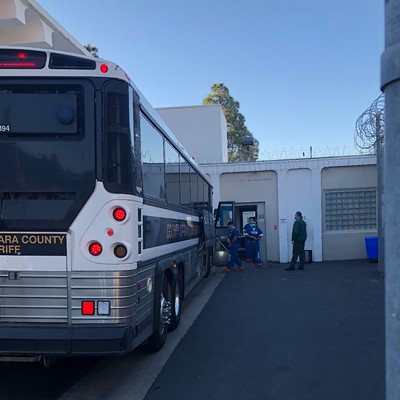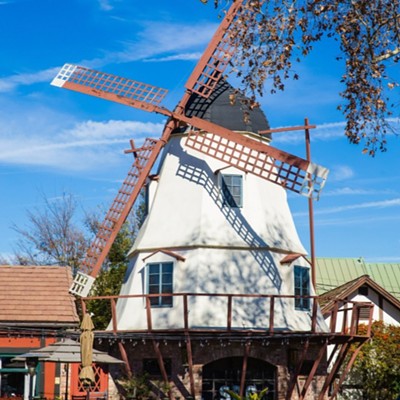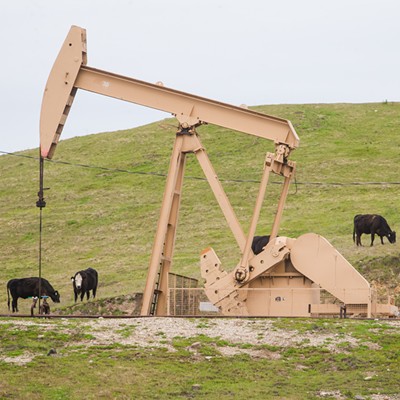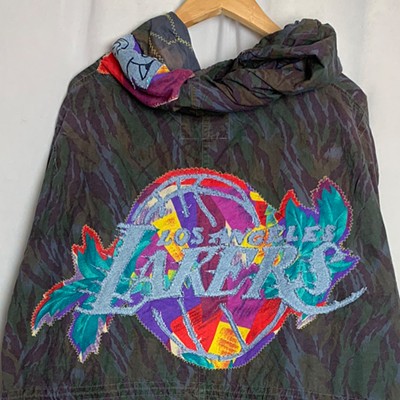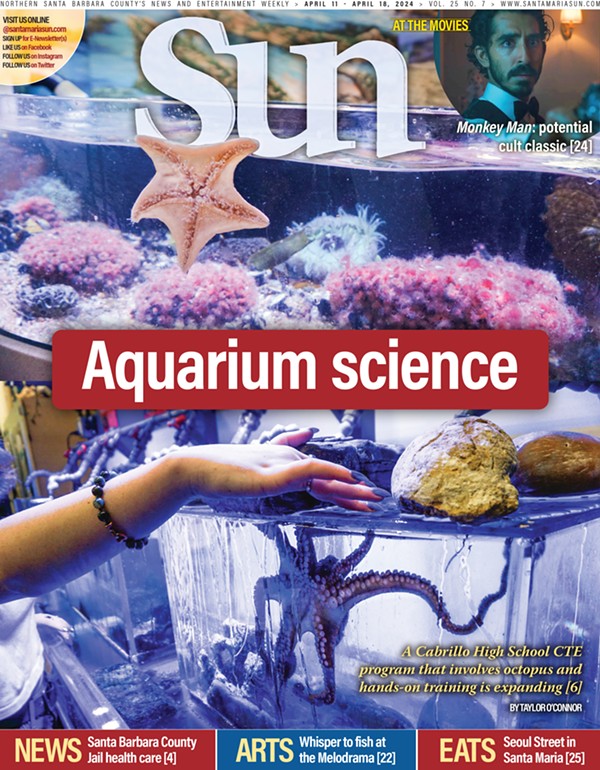When it comes to the question of “is California in a drought?” The answer depends on who you ask.
On Feb. 6, the U.S. Drought Monitor listed Santa Barbara, Ventura, and Los Angeles counties as experiencing what it called “severe drought” conditions. The designation is the third in five total levels on the monitor’s scale—compiled by the U.S. Department of Agriculture (USDA)—with the worst and fifth being “exceptional.” A week later, the agency added San Luis Obispo, Kern, Tulare, and Kings counties to the severe drought level, citing a warm, arid winter and historically low snowpack in the Sierra Nevada.
Eric Luebehusen, a USDA meteorologist and one of the authors of the Drought Monitor, told the Sun that federal scientists use a collaborative approach when compiling the monitor’s data. The method includes local rainfall inch totals compared to historic numbers, reports from regionally and locally based National Weather Service meteorologists, as well as satellite information from the Geographic Information System, which Luebehusen described as “Google Maps on steroids.”
He said that while California may have backed off its drought declaration status following one of the wettest winters on record in the northern half of the state last year, this wet season thus far has indicated a return to dry conditions.
“For the current water year, if you go from basically San Luis Obispo down to LA, the actual precipitation numbers right now, as in the actual percent of normal rainfall for the current water year, I’m seeing values 25 to 15 percent of normal all up and down the coast,” Luebehusen added.
Meanwhile, the snowpack picture in the Sierra Nevada, the source for much of California’s water, isn’t much prettier.
Brad Rippey, another USDA Meteorologist and Drought Monitor author, explained that mid February’s snowpack reports in California were actually lower now than at any point during the four year drought of 2012 to 2016.
UCLA Climate Scientist Daniel Swain told the Sun that while the current winter was “not quite the all-time driest to date,” the numbers “were not far off.” That record could be reached if the wet season continues with more days of zero precipitation.
“What’s really striking, in the city of LA proper there’s only been one day, a single day, in the last 361 days, very close to a full calendar year, with more than a half of an inch of rain,” he said.
That was the day of the Montecito mud flows.
Despite the relatively bone-dry winter, California water officials have been hesitant to make another drought declaration, citing surface water that filled to record levels last winter.
“Thanks to the fact we had a very wet year last year, we are going in to what looks to be a dry year in Southern California with good storage in most of the state’s major reservoirs,” said Jeanine Jones, interstate resource manager for California’s Department of Water Resources.
Jones noted that while the state may be sliding into another dry year as the rainy season’s window slams shut in March, the USDA Drought Monitor’s depictions of California’s water paint only a partial picture.
“The U.S. Drought Monitor is attempting to depict conditions as a one-map-fits-all for the nation as a whole, and that doesn’t work as well in places like California where we have a system of managed water supply—where we move water over long distances, like the State Water Project,” she said. “One dry year doesn’t make a drought for most water agencies; of course, every local agency looks at the factors that are important for its local supply when they decide what conditions are.”
That reasoning is why Santa Barbara County and its cities have remained firm in their drought declarations.
“For us, we don’t think much has changed and we strongly believe we are still in a drought,” said Joshua Haggmark, water resources manager for the city of Santa Barbara. “Last year was a mild blip, and basically bought us another year of water, but it didn’t change our approach.”
Fray Crease, Santa Barbara County’s water agency manager, said the county maintained its drought declaration because even though last winter brought significant rainfall, Cachuma Reservoir, one of the county’s largest water sources, only filled up halfway.
“It may have rained last winter, but it didn’t solve our water supply problem,” she said.
Santa Maria Water Resources Manager Shannon Sweeney said the prospect of limited water in dry years from the State Water Project—which according to Santa Barbara County accounted for 84 percent of Santa Maria’s used water in 2016—was why the city tried to use the transported state water as much as possible instead of relying solely on its considerable groundwater supply in the Santa Maria basin, the largest aquifer in the county.
“We use as much state water as much as we can, and what that does is that reserves our groundwater supply for times when our imported supply isn’t as plentiful,” she said.
So why the disparity in drought definitions when parts of California are clearly exhibiting signs of it? The state’s Jones explains:
“There are many different ways to define drought: Meteorologists could define it as precipitation for some period of time being below average; hydrologists might define drought as surface water runoff for some time being below average; an individual city or water district could define drought as when their wells start having problems or when their wholesaler cuts their water supply. But from the statewide perspective, we look at it in terms of impacts: If it’s dry but you’re not really experiencing impacts, it probably doesn’t rise to the level of a drought,” she said. “On the other hand, if your supplies have been shorted, your groundwater levels are dropping, and it’s not raining, then an individual is going to be saying, ‘I’ve got a lot of impacts … this is a drought.’
“California is a big state, so obviously what someone in Eureka is feeling may be very different from what someone in Long Beach is feeling,” she added.
UCLA’s Swain said that while this year’s dryness may not offer too many problems for California’s water system, the future does not look particularly bright.
“The surface water this year is OK because we had a wet winter last year, but it can’t last forever,” he said.
Staff Writer Spencer Cole can be reached at [email protected].



